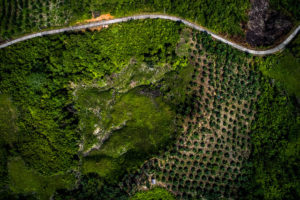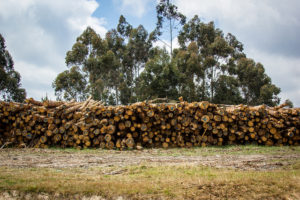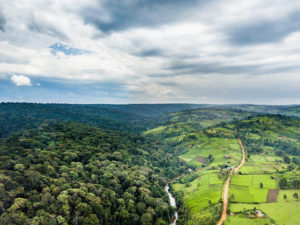
Halting and reversing deforestation are key to achieving the Sustainable Development Goals (SDGs) and the objectives of the Paris agreement on climate change.
Within SDG 15 on life on land, Target 15.2 calls for halting deforestation by 2020, while the UN Strategic Plan for Forests (UNSPF) adopted in 2017 by the UN General Assembly calls for reversing the loss of forest cover and increasing forest area by 3 percent worldwide by 2030.
The Collaborative Partnership on Forests organized a conference titled “Working across sectors to halt deforestation and increase forest area” on Feb. 20-22 to discuss with various actors and stakeholders the possible ways of meeting these targets.
The conference aimed to provide substantive input to the High Level Political Forum (HLPF), the United Nations’ central platform for follow-up and review of the SDGs, that will this year have a particular focus on SDG 15. The objective was thus to identify ways to help halt deforestation and increase forest cover and to engage actors in this objective. The chairs’ summary of the conference has now been released.
At the conference in Rome, the CGIAR Research Program on Forests, Trees and Agroforestry (FTA) led the organization of a session on stakeholders, and coorganized with the International Union of Forest Research Organizations (IUFRO) a session on science and research. Scientists from FTA also participated in various other sessions, on areas such as landscape management, agroforestry, restoration, sustainable agriculture, governance and finance.
“The role of different stakeholders” session was jointly hosted by the Center for International Forestry Research (CIFOR), IUFRO and FTA. It was grounded in the fact that most drivers of deforestation lie outside the forest sector, are rooted in wider social and economic issues, and are related to the interaction of numerous factors at local and global levels. Deforestation and forest degradation, in turn, affect a wide range of actors, threatening incomes, livelihoods and ways of life for forest-dependent populations and compromising the provision of ecosystem services.

The session gathered an impressive set of panelists, with a considerable range of experience, while I had the pleasure of moderating the discussion. The Honorable Lamin B. Dibba, The Gambia’s Minister of Forestry, Environment, Climate Change and Natural Resources, delivered a keynote on policies implemented in The Gambia. Carlos Manuel Rodríguez, Regional Vice President of Conservation International, Conservation Biodiversity’s Regional Director for Mexico and Central America and former environment minister for Costa Rica, retraced the implementation of policies to protect forests in his country.
Cécile Ndjebet built on her broad experience in civil society organizations, including as founder of the African Women’s Network for Community Management of Forests (REFACOF), to recommend facilitating the engagement of all actors. Petra Meekers, Director of Corporate Social Responsibility and Sustainable Development at Musim Mas Group, explained how the private sector is increasingly concerned and engaged.
In addition, Salina Abraham, President of the International Forestry Students’ Association (IFSA) and youth coordinator for the Global Landscapes Forum emphasized, the importance of youth as a vector of innovation and change. Marco Albani, Director of the Tropical Forest Alliance 2020, and member of the Executive Committee of the World Economic Forum, highlighted the synergies between government and private sector action.
Participants emphasized the importance of having all actors involved, recognizing the crucial role of governments to ensure the coordination of policies and to create an enabling environment and mechanisms for actors to fully play their roles and engage with one another. Deforestation is a global phenomenon which requires global, regional and national efforts to address it. It calls for the coordination of efforts of all stakeholders along two dimensions: vertical along value chains; and horizontal, across scales, particularly at landscape level.
The example of Costa Rica shows the potential of effective coordination between policies, grounded on clear shared recognition of the value of natural capital. National policies and the rule of law are the basis, which require transparency and good governance.
Voluntary standards and corporate responsibility are insufficient by themselves but they can also play a role in facilitating the adoption of rules. The private sector, to answer demand, and civil society as triggering it, have thus a fundamental role at both global and national levels. Sustainable production and production (SDG 12) can strengthen this movement.

Value chains have many actors, all along the chain. It is essential to have all these actors, men and women, at the center of actions and activities. Their roles and contributions need to be properly recognized and rewarded. They need to be supported, through capacity building and financial support, so that they can engage with one another and with the private sector. There is considerable untapped potential in women, youth, and more broadly in civil society.
The private sector is increasingly willing to act, taking seriously its responsibilities. It is not always easy. It is important to have an entry point to engage with local communities, like sustainable land use, and to have the engagement of local government. There is a need for different business models. We must give back more to communities, taking into account social issues, gender dimensions, and food security and nutrition. Academia can help a lot.
The example of The Gambia shows how community management, with a return of income from forests to forests and communities, can be a powerful mechanism for sustainable forest management and rural development.
Ensuring coordination between sectors requires appropriate mechanisms, some of which have already shown their merits. For instance, the Forest Forum in Finland has for 21 years been engaging decisionmakers not only from the forestry sector but also from connected sectors, raising awareness and learning from each other. This mechanism is now being adopted in other countries.
In various countries there are already mechanisms to organize the participation and coordination of actors, at local, subnational and national levels. They are often linked to a clear jurisdictional level, which facilitates implementation. There are opportunities to improve their efficiency, to bring in new actors, and to give them more meaningful representation. In that regard the participation of civil society, women and youth can bring new perspectives and trigger action on the ground.
The private sector is willing to be part of these collective dynamics and can make a key contribution to the implementation of the SDGs.
From these exchanges the following key points can be deduced:
- We need coordination of efforts between all stakeholders along value chains, and across scales, particularly at landscape level.
- Governments play a crucial role in ensuring coordination of policies and in creating the enabling environment and the mechanisms for actors to fully engage.
- The private sector, to answer demand, and civil society as triggering demand, have fundamental roles in shaping enabling environments at both global and national levels.
- The different roles and contributions of all value chain actors, both men and women, need to be properly understood, recognized and rewarded. There is a considerable untapped potential in women, youth and broader civil society.
- The private sector is increasingly willing to act, and is taking its responsibilities seriously.
- Community management, with the return of revenues from forests to communities, can be a powerful mechanism to foster sustainable forestry management and rural development.
- Coordination between sectors requires appropriate mechanisms. Some countries already have mechanisms to organize the participation and coordination of actors at local, subnational and national levels.
- Private sector actors and large corporations, especially large-scale crop plantations, can act as role models in enforcing zero-deforestation commitments throughout their operations, and in taking care of environmental and social concerns.
- To improve interactions between stakeholders, quality governance is key to genuinely confront multiple objectives and demands, agree on priority actions and align solutions informed by scientific evidence, shaping integrated zero-deforestation policies and enabling environments.
Deforestation is a problem for everyone, and fighting against deforestation is everyone’s fight. Zero-deforestation should be an essential element of SDG12 on responsible consumption and production, including outside the forest sector in food, feed and bioenergy.
By Vincent Gitz, CGIAR Research Program on Forests, Trees and Agroforestry (FTA) Director.
For more details about the Halting Deforestation conference, view the conference program or watch recordings of the plenary sessions.
This research forms part of the CGIAR Research Program on Forests, Trees and Agroforestry, which is supported by CGIAR Fund Donors.











